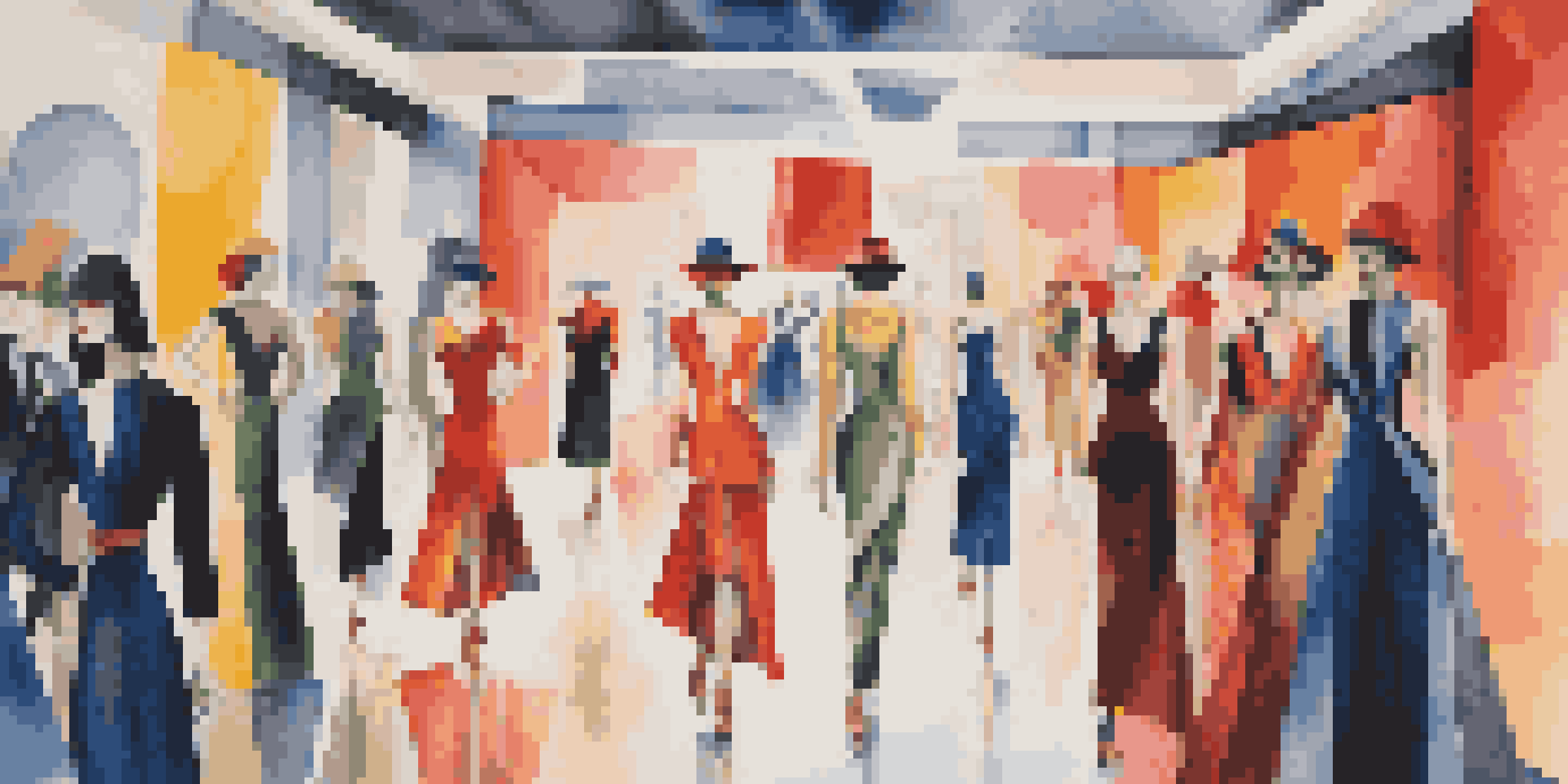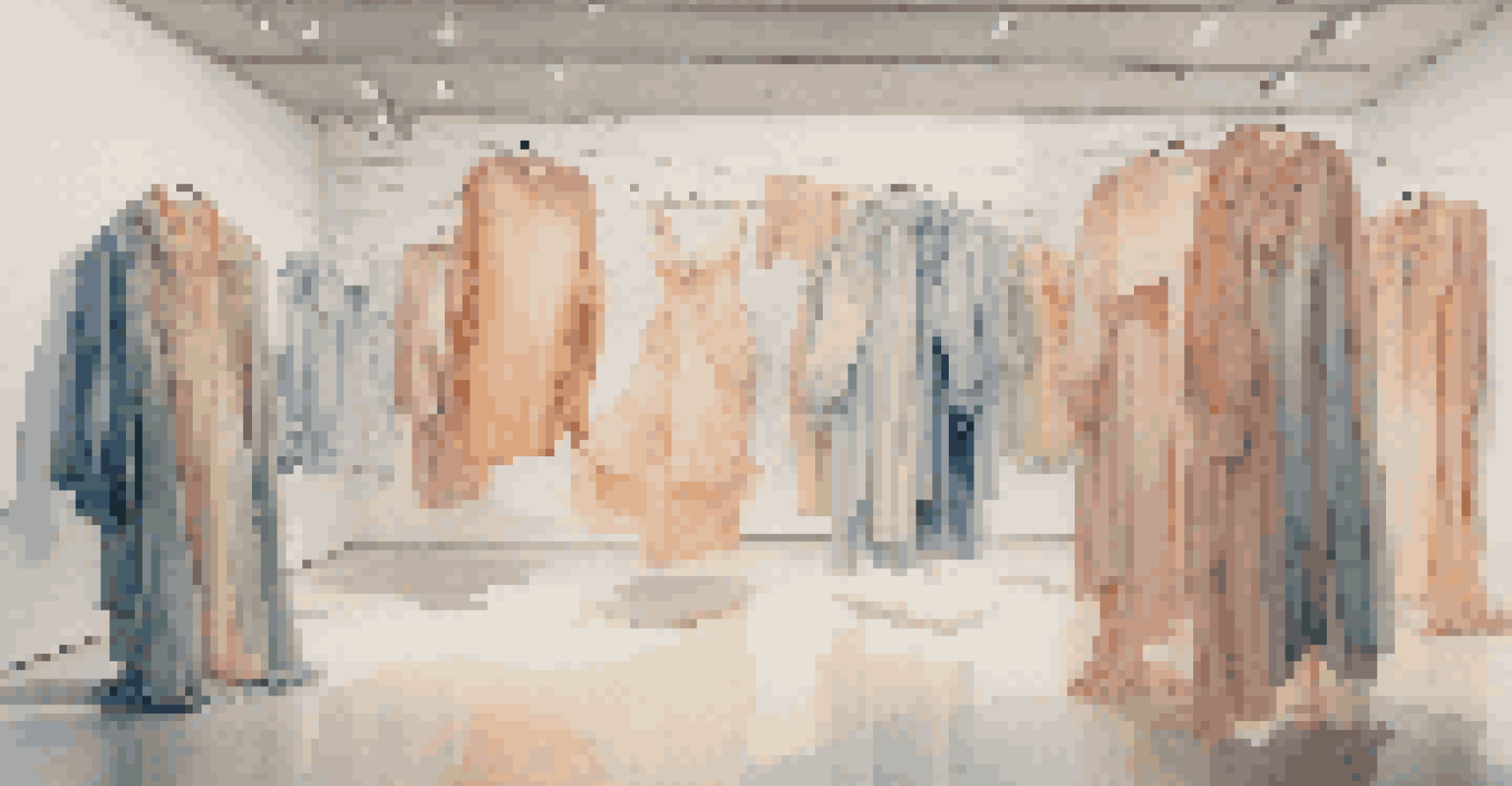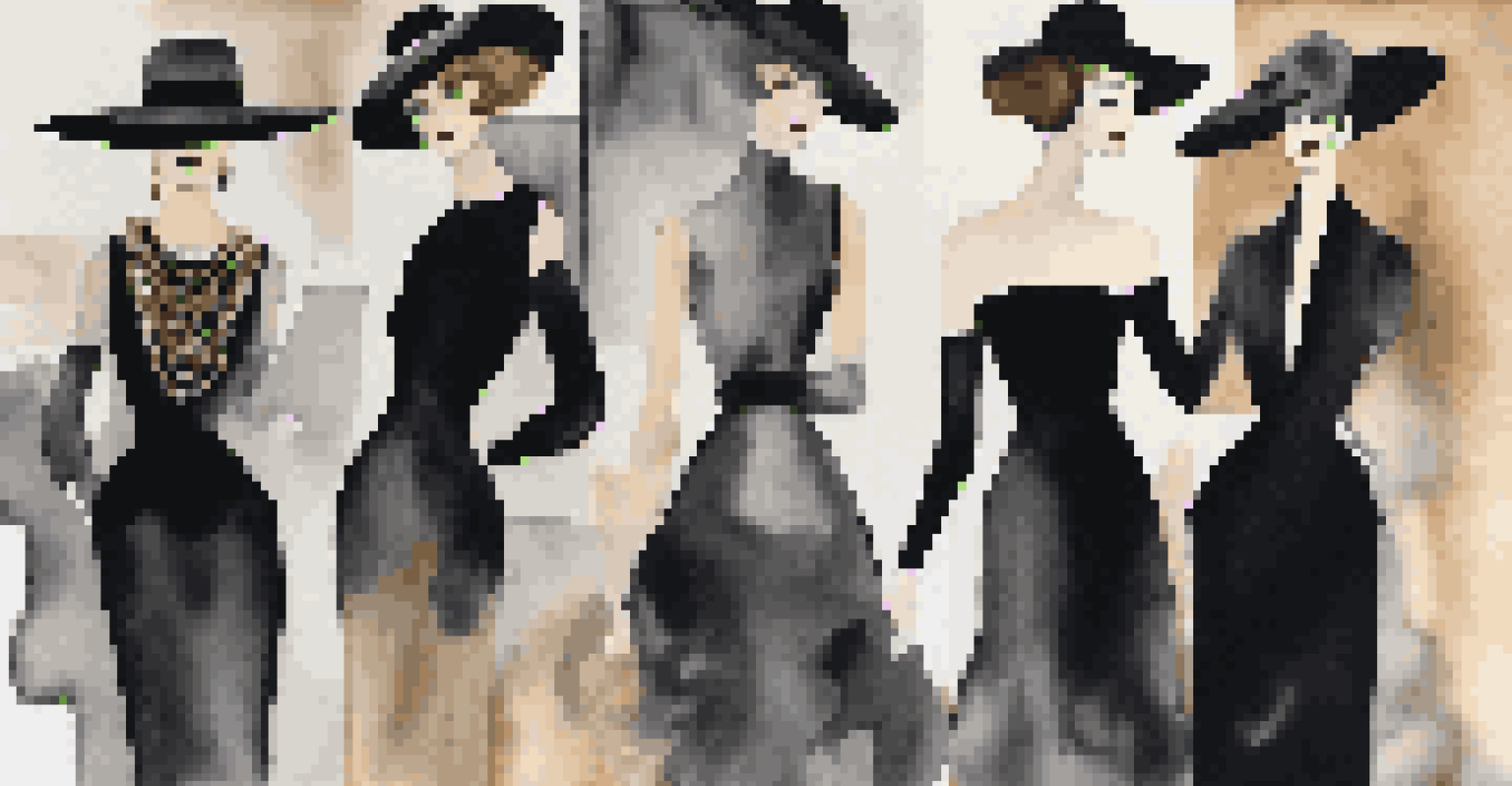The Role of Fashion in Art History: A Comprehensive Study

The Intersection of Fashion and Art: A Historical Overview
Fashion and art have long been intertwined, with each influencing the other throughout history. From the elaborate garments of the Renaissance to the minimalist styles of the modern era, fashion has often served as a canvas for artistic expression. This interplay highlights cultural shifts, social norms, and individual identities, making it a fascinating subject of study.
Art is not a thing, it is a way.
In many ways, fashion acts as a reflection of the artistic movements of its time. For instance, the bold colors and geometric shapes of Cubism can be seen in the avant-garde clothing designs of the early 20th century. Similarly, the flowing lines of Art Nouveau inspired both designers and artists, showcasing how one discipline can elevate the other.
Moreover, examining the evolution of fashion within various art periods allows us to appreciate the broader narrative of human creativity. It reveals how societal changes, such as the rise of feminism or the impact of industrialization, have shaped not only what people wore but also how they expressed themselves artistically.
Fashion as an Artistic Medium: Not Just Wearable
Fashion extends beyond mere clothing; it can be seen as an art form in its own right. Designers often use fabrics, textures, and patterns to tell stories and convey emotions, much like painters use colors and brush strokes. This artistic approach allows fashion to evoke feelings and provoke thoughts, positioning it as a vital component of contemporary art.

Take the work of designers like Alexander McQueen, who frequently blurred the lines between fashion and art. His collections often included theatrical elements that transformed the runway into an immersive experience, much like a gallery installation. This fusion of fashion with dramatic storytelling highlights the power of clothing as a medium for artistic expression.
Fashion Reflects Art Movements
Fashion serves as a mirror to artistic movements, showcasing how societal changes influence clothing styles and expressions.
Furthermore, fashion exhibits in museums around the world underscore its significance as an art form. Institutions like the Costume Institute at the Metropolitan Museum of Art have curated exhibitions showcasing the intricate relationship between fashion design and artistic innovation, allowing visitors to engage with fashion as a legitimate and celebrated art.
Fashion Icons: Their Impact on Art and Culture
Throughout history, certain fashion icons have transcended their roles as mere style setters to become symbols of artistic movements. Figures like Coco Chanel and Yves Saint Laurent not only influenced fashion trends but also revolutionized the way women expressed their identity through clothing. Their designs often reflect broader cultural shifts, making them integral to art history.
Fashion is the armor to survive the reality of everyday life.
For instance, Chanel's introduction of the 'little black dress' redefined women's fashion, emphasizing simplicity and elegance. This shift was not just about clothing; it symbolized women's liberation and changing societal roles, making Chanel a pivotal figure in both fashion and art history.
Likewise, pop culture icons like Andy Warhol embraced fashion, integrating it into their artwork. Warhol's vibrant depictions of celebrities and consumer goods blurred the lines between high art and commercial culture, illustrating how fashion can serve as a vehicle for artistic commentary and social critique.
The Influence of Art Movements on Fashion Trends
Art movements have historically inspired fashion trends, creating a cyclical relationship between the two. The Impressionist movement, for instance, inspired softer silhouettes and pastel colors in clothing, reflecting the artists' focus on light and nature. This connection shows how fashion can embody the aesthetic principles of various art movements.
Similarly, the bold expressions of Abstract Expressionism translated into the world of fashion, with designers adopting vibrant colors and unconventional shapes. This artistic influence allowed fashion to become an extension of the artistic ethos, showcasing how both realms can evolve together.
Fashion as an Artistic Medium
Designers use clothing to tell stories and evoke emotions, elevating fashion to a recognized form of contemporary art.
Moreover, as contemporary artists engage with fashion, we see a continuous dialogue that blurs the boundaries between the two fields. Collaborations between artists and fashion designers, such as those seen in the works of Jeff Koons and Louis Vuitton, further emphasize this interplay, making art accessible through wearable pieces.
Cultural Reflections: Fashion in Art as Social Commentary
Fashion in art often serves as a powerful commentary on societal issues, reflecting cultural values and tensions. Artists have used clothing as a symbol to address topics such as class disparity, gender identity, and race. This representation allows viewers to engage with and critique the social constructs surrounding fashion.
For example, the work of Kehinde Wiley highlights the historical representation of Black individuals in art, often featuring subjects in contemporary streetwear against classical backdrops. This juxtaposition not only challenges traditional art narratives but also invites conversations about identity and representation in both art and fashion.
Similarly, the punk movement in the 1970s utilized fashion as a form of rebellion, with artists and designers embracing torn fabrics and DIY aesthetics to convey anti-establishment sentiments. This use of fashion as a vehicle for social commentary illustrates how deeply intertwined art and societal reflection can be.
The Role of Fashion in Modern Art Installations
In recent years, fashion has found its place in modern art installations, showcasing its artistic significance in innovative ways. Artists are increasingly incorporating garments into their work, using clothing as a medium to explore themes of identity, gender, and consumerism. This trend highlights fashion's evolving role within the contemporary art scene.
For instance, installations that feature large-scale garments or clothing sculptures invite viewers to physically engage with the art, prompting personal reflections on their own relationship with fashion. This interactive aspect allows for a deeper understanding of how fashion shapes our lives and influences our self-perception.
Icons Shape Cultural Narratives
Fashion icons like Coco Chanel and Yves Saint Laurent not only set trends but also embody significant cultural and artistic shifts.
Moreover, events like the Met Gala, which often blend fashion with art, highlight the ongoing dialogue between these two fields. By showcasing designers' creations as art pieces, these events elevate fashion to a level of cultural significance, reinforcing its role in the broader art narrative.
The Future of Fashion in Art: Trends to Watch
As we look ahead, the relationship between fashion and art is poised to evolve further, driven by advancements in technology and shifts in cultural values. The rise of digital fashion and virtual reality experiences is transforming how we perceive and interact with clothing, making it an exciting area to watch. This merging of technology with fashion opens new avenues for artistic exploration.
Additionally, sustainability is becoming a key focus in both fashion and art, with artists and designers increasingly addressing environmental concerns. This trend not only reflects a growing awareness of ecological issues but also encourages innovative practices that challenge traditional fashion norms.

Ultimately, the future of fashion in art lies in its ability to adapt and respond to contemporary issues. By embracing new technologies and sustainable practices, the dialogue between these two fields will continue to thrive, offering fresh perspectives on identity, culture, and creativity.